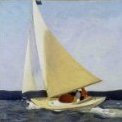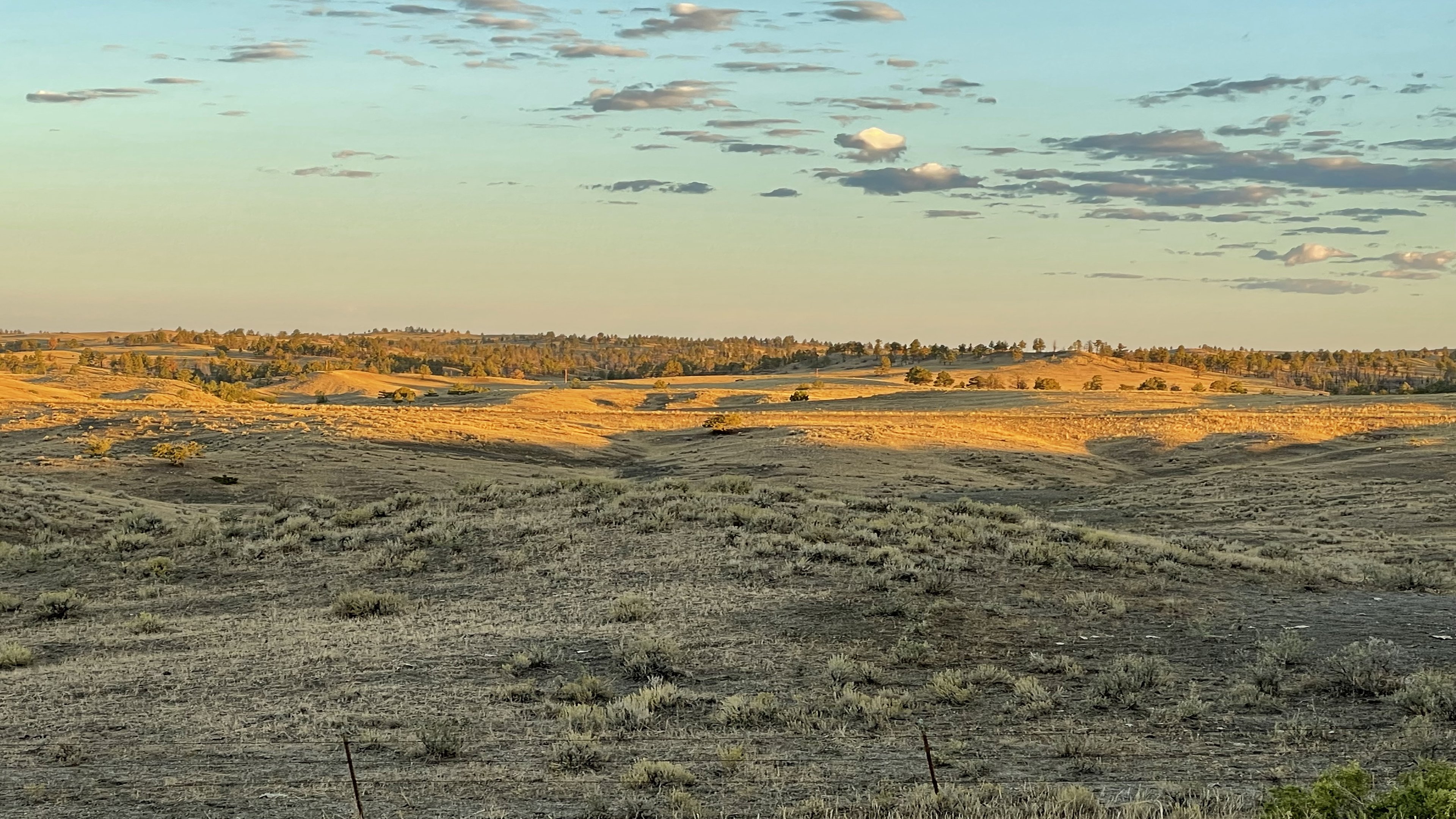-
Posts
611 -
Joined
-
Last visited
Content Type
Profiles
Forums
Gallery
Events
Everything posted by Jay 1
-

Acrylic over oil based stain?
Jay 1 replied to Paddy's topic in Painting, finishing and weathering products and techniques
Paddy, S. Coleman's suggestions are spot on. I've painted over with acrylics, stuff where I've used Danish oil or oil-baed Minwax. If you can, don't stain that area but if it can't be avoided or etc., then make sure the oil-based finish has completely dried, then give the area that you're going to paint a light sanding with some fine grit sand paper. Jay -
Not sure what I'll use yet, Joe. Will do some forum research to find out likes and dislikes, along with talk to a few folks. It'll be a while yet before I start going down the scratch road--still need a few big-ticket tools; also want to get more building skills under my belt using kits before I tackle a scratch project. At this point, I'm building and gathering resources and setting intentions for where I want to go . Jay
-
Tom, many thanks! I just scrolled through the lifting and lofting section and saved the practicum. Bodnar's instructions and images look great; between him and Chapelle, I think I'll grasp the drafting. Reading, seeing images, and doing will be how I'll "get" it. Once I fully understand the process, doing it in a software program should'nt be too brutal--then it'll just be learning software rather than both. Thanks for your help fellas--most appreciated! Jay
-
I am looking for books or articles that clearly describe--and even better if there are accompanying good photos or drawings--how to lift from plans and then loft that info. into drawing, or other similar, software. I eventually want to go to the dark side and scratch build; right now I am thinking that I'd like to break into that area of model shipbuilding by starting with converting a couple of solid hull kits to POBs. Currently I have both volumes of Underhill's Plank on Frame books, but found him a bit difficult to follow due to the lack of photos/pics--I just learn better on some things when I have visuals and this is one of those areas for me. I just found and last night purchased reasonably priced copies of Hahn's Colonial Schooner & Ships of the American Revolution but have no idea yet of how in-depth they go into lifting and lofting. Also, given when both of these were written, I doubt these go into translating lifted data into software; however, I don't think that part of the process will be hard to figure out as long as I clearly understand the process of how to lift and loft. Since a lot of both new and used model shipbuilding books are available to me only through the Internet, it's a drag buying a book sight unseen and then discovering it doesn't contain the information I'm really after. To avoid some of that, I figured I throw my question/request out here on the forum and see what is recommended. Thanks for your time, help, and suggestions! Jay
-

Squaring Mini Drillpress to Work?
Jay 1 replied to Jay 1's topic in Modeling tools and Workshop Equipment
Wefalck, that's a great suggestion and solution for the Proxxon! You're spot on about the spindle size--it's difficult to see how it's sitting on a reference surface. Joe, I didn't know they offered that discount--thanks for the heads up! -

Squaring Mini Drillpress to Work?
Jay 1 replied to Jay 1's topic in Modeling tools and Workshop Equipment
Wefalck I was wondering about this in relation to the vise I'm using, since it's what I use for most of my work. Thanks, your post answered my questions. I think I'll use a rod in a collet for a quick check, and it sounds like the technique will be fairly accurate for most of my drilling work with the Proxxon. I eventually want to purchase a decent milling setup, but for now, the Proxxon will work for most of what I'm currently building (and planning to build in the near future). The next major tool purchase will be a lathe (am looking at Sherline's 17" (~ 43 cm) bed model). Jay -

Squaring Mini Drillpress to Work?
Jay 1 replied to Jay 1's topic in Modeling tools and Workshop Equipment
Wefalck, you're right, both methods are very simple--much less complicated than the picture I had in my mind; now I completely understand your technique with the drill bit and block--thanks! Jay -

Squaring Mini Drillpress to Work?
Jay 1 replied to Jay 1's topic in Modeling tools and Workshop Equipment
Joe, your CAD work is looking really nice! Am eventually going to go that route myself. I bought a few solid hull kits that I want to convert to POBs--those are sort of how I am planning to cut my teeth on scratch building. @ Wefalck: Would you post a picture or two of your tramming setup, please? I think I know how you're setting your tramming gear up, but a photo's usually worth a 1000 words. -
Between this build and your restoration/redesign project, I'm thoroughly enjoying seeing your excellent craftsmanship, Michael!
- 2,196 replies
-

Squaring Mini Drillpress to Work?
Jay 1 replied to Jay 1's topic in Modeling tools and Workshop Equipment
Thanks, Joe--I'll definitely give you a shout! . Sounds like you're getting your CNC setup going, wow, CNC mills and lathe setups are awesome--you'll be able to do some really amazing stuff with your new rig! Jay -

Squaring Mini Drillpress to Work?
Jay 1 replied to Jay 1's topic in Modeling tools and Workshop Equipment
Joe, I'm going to give it a google today, thanks as I had no idea that there were devices for tramming mills (last time I used one was over 20 years aog). The device you posted looks sweet and it's small--perfect for hobby setups! Now I just need to find a small center finder for drilling dowels on their sides (found some but they look too big for a mini drill press). Jay -

Squaring Mini Drillpress to Work?
Jay 1 replied to Jay 1's topic in Modeling tools and Workshop Equipment
Darren, your technique is awesome! Yep, totally understand what you described--simple and effective. Am going to bend some piano wire stock that I have and give it a try today. Joe, that's a great tool! It's been years since I worked on a mill; learned how to tram 'em using old school techniques--getting the column right was the hardest and most time consuming. Am looking at Sherline mills, once I take the plunge, that's the 1st tool I'm going to buy because tramming a mill is a bear. I think the mini will work for the x-axis on my Proxxon but it maybe too wide for the y-axis (will have to read the tool's specs to know for sure). Thanks fellas, appreciate your taking time to lend a hand--these are great suggestions! Jay -

Squaring Mini Drillpress to Work?
Jay 1 replied to Jay 1's topic in Modeling tools and Workshop Equipment
Thanks Mark. One place where I get thrown off is when I adjust the head after checking the square--I'll tighten the head & it often gets thrown out when I do so. Hmm, methinks I have to be smarter than the tool so more fiddling is called for... May need to use some shims on the table as well--still getting used to working with such small tools. -
I recently purchased a Proxxon drill press along with a vise and x-y table. While I'm happy with the setup, I haven't yet figured out a good method for squaring the press to the work I'm drilling. I've tried using a small square to align the head and work with mixed results. However I think the trick may be to square the head with the fixed shaft that the head raises and lowers on instead of with the x-y table / vise. Was wondering how others square their mini drill presses? Thanks! Jay
-
Thanks for your feedback, Russ. It'll be interesting to see if this was done elsewhere, so will study old photos, where possible, when I start those projects (am fortunate to have a good public and several university libraries nearby). Completely understand about not posting the entire photo re. unscrupulous people. The pics you've shared with your build are great--thank you! Jay
-
That's an interesting observation, Russ--am curious if that deckhouse design was exclusive to Biloxi schooners or extends to schooners in general? I'm eventually going to be building a few schooners, so your observation is something I'm tucking away for when I start my research. That's also a very nice photo--looks like one fellow is wearing a bowler, so am guessing the picture is somewhere between late 1800s to late 'teens or early 20s? Jay
-
Your re-work looks great, and I like the color contrasts you used with the stains. Mmm from what you've said, and also from what I've also experienced, replacing key basswood pieces on a build with harder wood is the way to go--adds a little to a kit's cost but perhaps saves on hassle and etc. with fighting with basswood.
- 234 replies
-
- 18th century longboat
- model shipways
-
(and 1 more)
Tagged with:
-
Just caught up with your log; the serving machine Michael built is really nice--his work is stunning! And looking forward to your wedding pics...for your bridal registry, maybe list all the building tools you'd like... J
- 773 replies
-
- san francisco ii
- artesania latina
-
(and 1 more)
Tagged with:
-
Russ, I'm enjoying seeing your work and reading your thought process as you move forward with the build. Love what you paraphrased from Underhill...I'm learning that it's spot on for this hobby! BTW, did you keep or chuck the hawse lips? Will look forward to seeing the scarph work you do when you install the final rail. Oi, are you in the trenches for the summer session?
-
Michael, I'm totally blown away by your work--you sir, are a master craftsman and then more! Jay
- 2,196 replies
About us
Modelshipworld - Advancing Ship Modeling through Research
SSL Secured
Your security is important for us so this Website is SSL-Secured
NRG Mailing Address
Nautical Research Guild
237 South Lincoln Street
Westmont IL, 60559-1917
Model Ship World ® and the MSW logo are Registered Trademarks, and belong to the Nautical Research Guild (United States Patent and Trademark Office: No. 6,929,264 & No. 6,929,274, registered Dec. 20, 2022)
Helpful Links
About the NRG
If you enjoy building ship models that are historically accurate as well as beautiful, then The Nautical Research Guild (NRG) is just right for you.
The Guild is a non-profit educational organization whose mission is to “Advance Ship Modeling Through Research”. We provide support to our members in their efforts to raise the quality of their model ships.
The Nautical Research Guild has published our world-renowned quarterly magazine, The Nautical Research Journal, since 1955. The pages of the Journal are full of articles by accomplished ship modelers who show you how they create those exquisite details on their models, and by maritime historians who show you the correct details to build. The Journal is available in both print and digital editions. Go to the NRG web site (www.thenrg.org) to download a complimentary digital copy of the Journal. The NRG also publishes plan sets, books and compilations of back issues of the Journal and the former Ships in Scale and Model Ship Builder magazines.


